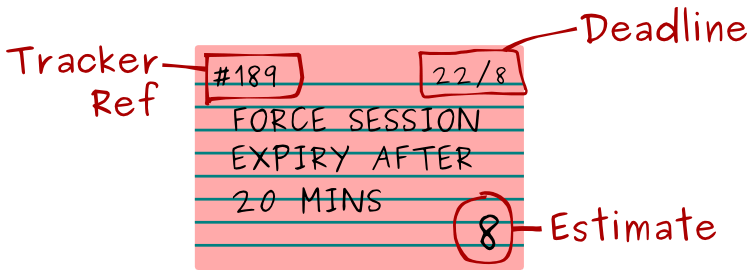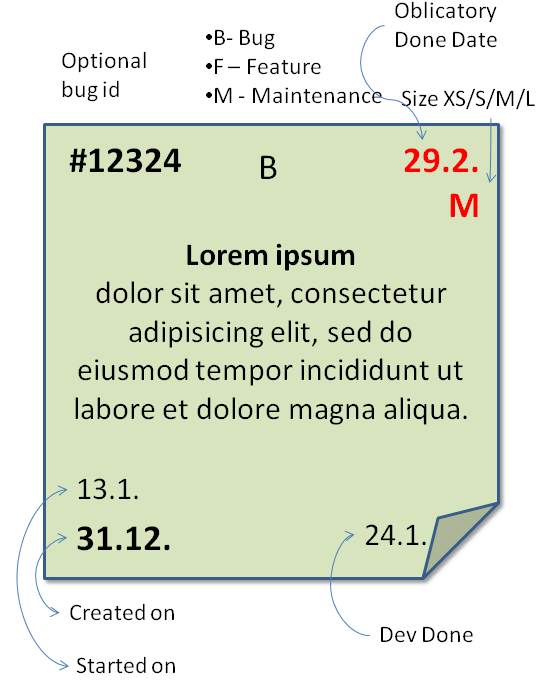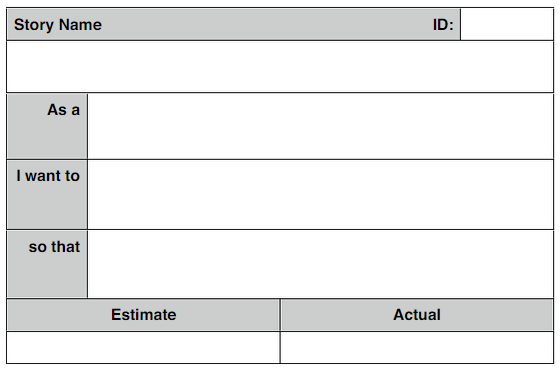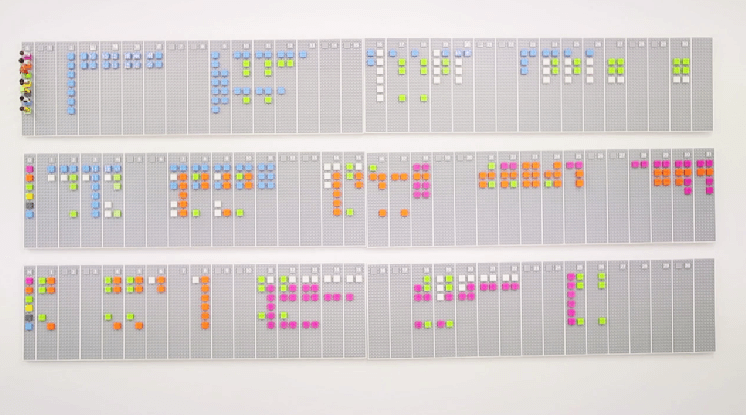Kanban task cards seem like a pretty straightforward thing – take a sticky note, write what you need to do and put it on the wall. However, as teams get bigger and boards are used by multiple teams at once, this is not good enough anymore. We need visualization, clarity and possibility to differentiate the tasks amongst one another. To accomplish this teams innovate and embellish their task cards. Here are our favorite ways to do that.
The simple way
This first Kanban card comes from Daniel Pope at MauveWeb. It is slight but very crucial update to the traditional sticky note approach adding the tracking reference, deadline and the estimate of how long the task will take in specific places of the card. In this way the task card is still kept really simple and does not need any special template, but allows for the team to find the information quickly and have more details on the board.
The detailed way
This next example by ikettu is quite similar to the first one, however it ads even more detail to the card. The introduction of the dates can prove very useful for some teams that need to track how long various tasks take to be completed, while the simple inclusion of task classification allows to quickly oversee the type of work the team is doing. This can help allocate resources, make executive decisions and even evaluate the quality of teams efforts.
The visual way
This Kanban task card, spotted by agile scout is definitely not for those that lack space on their board. However, it is great if you like having visual over textual information. Just by looking at such card, your team knows the difficulty, importance and the completion percentage of the task without even thinking about it. Also the inclusion of key principles of Agile and XP at the bottom are a nice touch and always good to have on hand.
The in between way
This next example from Fred Lee might be more interesting for those moving from Scrum to Kanban. This story card is designed to fit the user story requirement used in the Scrum practice, but can just as easily be used by Kanban teams. Simply add the relevant information and make sure to think more on the task scale rather than a story scale, this way you can slowly adopt your Scrum cards into Kanban ones.
The Lego way
Lastly we simply cannot forget this Lego task board by Vitamins. This is the most simplistic Kanban task card approach out of all and is certainly not fit for all teams, however if your are looking for a more creative and fun approach and do not require specific details on the board, it may be a great solution.
Share your Kanban task cards with us and remember do not be afraid – innovate!









